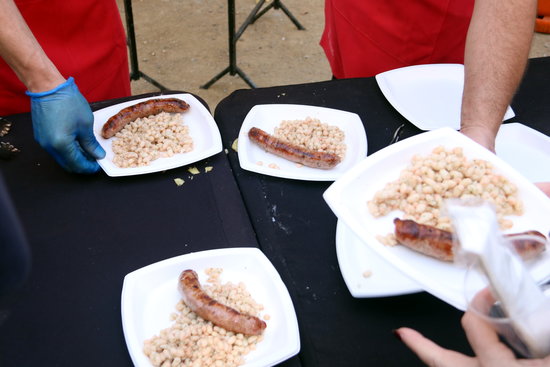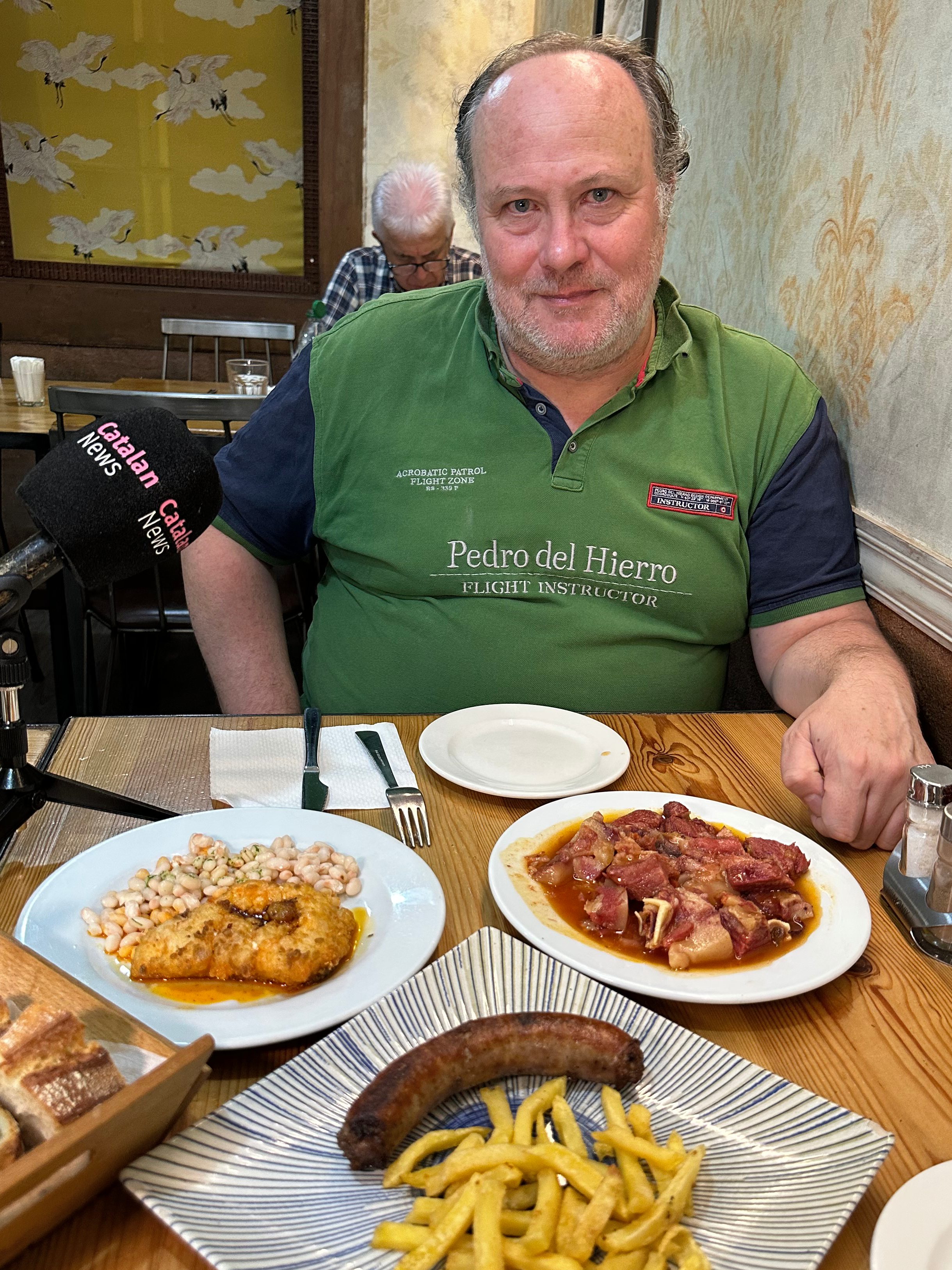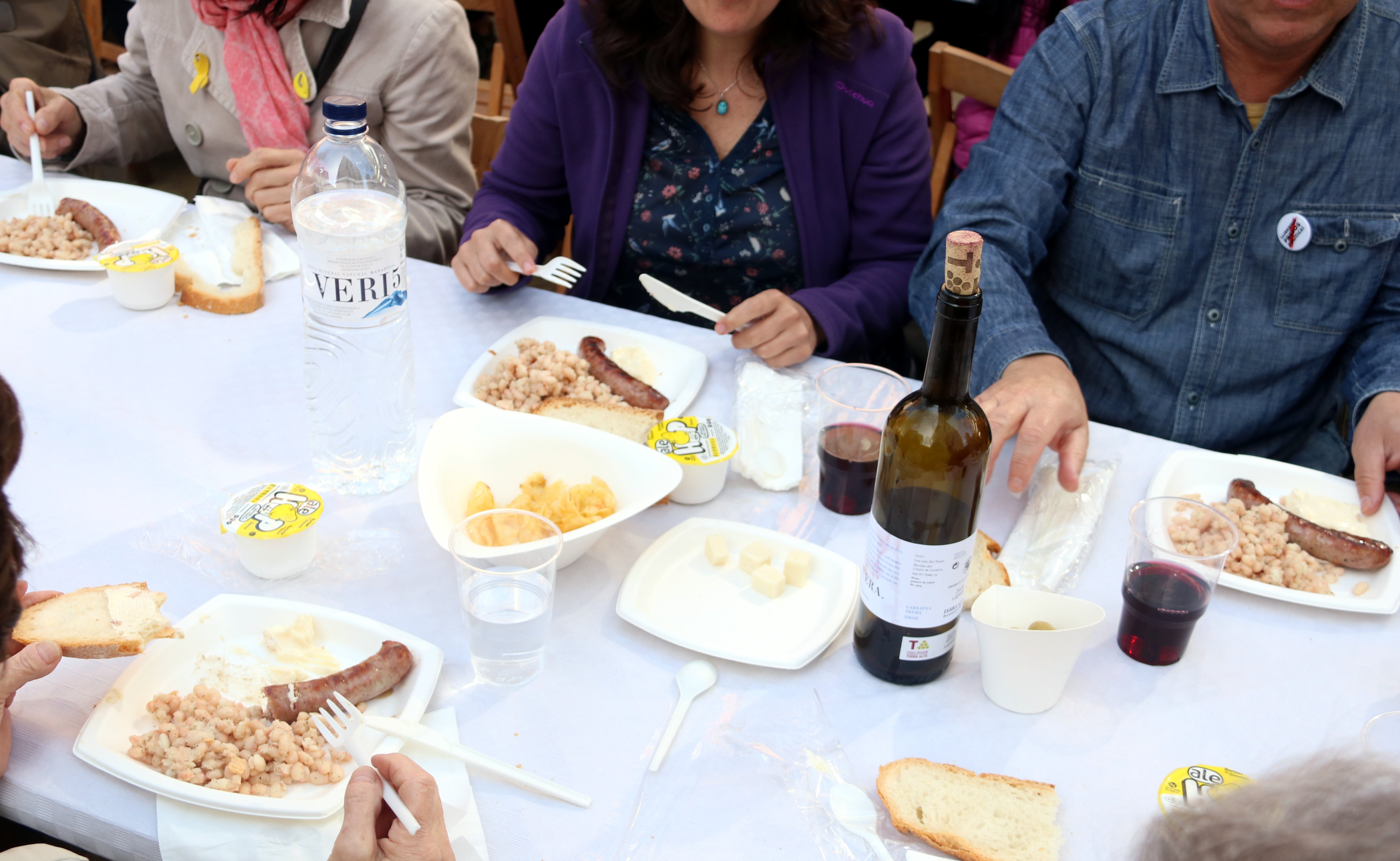Esmorzar de Forquilla: The local response to the rise of brunch places in Barcelona
Locals reclaim traditional Catalan breakfast as it struggles to compete with touristy spots

"I don't think there is a local breakfast; I’ve only seen coffee and pastries," says a tourist enjoying brunch in Barcelona's Eixample district, where such places have become increasingly popular in recent years.
A few blocks away, Bo de Bernat, a restaurant specializing in traditional Catalan cuisine opened a few years ago, serves 'esmorzar de forquilla', the traditional local breakfast, to the many patrons who fill its space from early morning.
There, I meet Albert Molins, a journalist from the newspaper 'La Vanguardia.' Molins is one of the pioneers of the movement to reclaim esmorzars de forquilla, which literally means breakfast with a fork, in response to the rise of brunch spots.
"Today, the esmorzar de forquilla is the best defense of traditional Catalan cuisine," he tells me. "The classic esmorzar de forquilla consists of a main dish, a glass of wine, bread, and ends with a coffee."
Molins explains that there is no single, definitive dish that defines an esmorzar de forquilla. "It can be anything rooted in traditional Catalan cuisine," he says.
Albert orders three of the most traditional dishes: 'Cap i Pota' (beef head and trotters), 'Botifarra amb mongetes' (sausage with beans), and 'Bacallà a la llauna' (salted cod).

Other popular staples of the esmorzar de forquilla include hearty stews, grilled meats, and traditional cured sausages, he tells me.
Another key feature is its affordability. "It cannot cost more than €15. Professional 'esmorzadors' (breakfast enthusiasts) get really angry if it does," Albert explains.
Unlike brunch, which unites breakfast and lunch, esmorzar de forquilla does not. "You can have something light as breakfast, then esmorzar de forquilla, and then lunch."
In fact, that is the origin of esmorzar de forquilla - a second breakfast for workers, both from industries and farms, to have energy until lunch, or even dinner in ancient times.
But nowadays, it has become more of a leisurely meal often enjoyed on weekends. "It is not something you can have every day, as it needs time," Molins explains.
The tradition has become deeply social, and it is frequently tied to cyclists, hikers, or groups gathering. "It is a shared experience," Molins adds.
A response against brunch
Alarmed by the dwindling visibility of Catalan cuisine and the rise of brunch spots, Molins embarked on a mission to preserve this culinary tradition.
"When you walk down the street, Catalan cuisine is not visible," he explains. In response, after the Covid-19 pandemic, he created a Google Maps listing of his favorite esmorzar de forquilla spots.
The simple idea quickly gained traction on Twitter, where other esmorzaires began contributing their own recommendations. Soon the map was filled with new locations.
As the community of esmorzadors grew, Molins saw the potential to take the idea further.
The result was EsmorzApp, a mobile app that now catalogs more than 2,000 traditional breakfast spots in Catalonia, along with listings for 400 in Valencia and 100 in the Balearic Islands.
The app's launch last summer was a resounding success, quickly becoming the number one food app in Spain.
Since its launch, the map has received 4 million visits and built a community of 8,000 active users.
Esmorzar is not Instagrammable
"Today, everything has to be Instagrammable," Molins says, attributing the decline of esmorzar de forquilla spots partly to their lack of visual appeal compared to brunch.
He also highlights Barcelona's drive toward modernity, which often marginalizes local traditions.
“Barcelona is eager to position itself as a global European capital, but in doing so, it discards its own heritage,” Molins adds.
As a result, the tradition has struggled to reach younger generations. "It should be about the food, not the décor," he says.

Tourists or locals: Who's to blame?
The decline of the traditional 'esmorzar de forquilla' restaurants, according to Albert Molins, is "our responsibility".
On one hand, Molins points out that Catalan cuisine lacks visibility. "Unless someone gives you a list and tells you to go here or there, it’s not easy to find," he says.
He notes that even in hotels across Catalonia, it’s easier to find an English breakfast than an esmorzar de forquilla, despite both requiring similar effort to prepare.
"We must be able to show our traditional food to people abroad, right in front of their eyes, because if we don't, they may never get to experience it," he says.
At the same time, Molins also faults tourists for showing little interest in learning about the culinary traditions of the places they visit.
"When tourists travel to Italy, you see them eating in traditional 'trattorias', looking for the best pizza, the best 'baba', or the best carbonara. This does not happen here," he laments.
In his extensive experience eating at esmorzar de forquilla spots, Molins says he has never encountered a tourist. "I wish I do someday," he adds.
To learn more about esmorzar de forquilla and Barcelona's brunch scene listen to this episode of our podcast Filling the Sink.